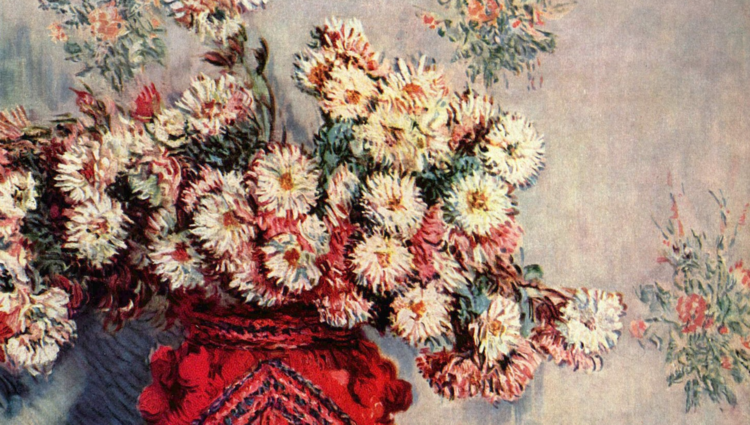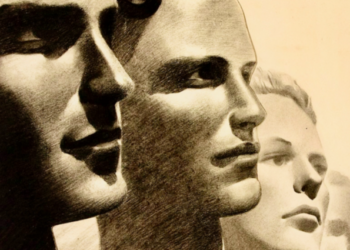Malachy G. Carroll might have had only one novel in him, and he might have only one novel to his largely unknown name, but it’s a minor classic that every Catholic should read.
 In 1952, and John Wayne’s latest film, The Quiet Man, is a huge hit at the box office. It is about a stranger who arrives in an Irish village with a secret he does not want to disclose. A year earlier, a little-known Irish author, Malachy G. Carroll, had published The Stranger, a novel about a stranger who arrives in an Irish village with a secret he is unable to share.
In 1952, and John Wayne’s latest film, The Quiet Man, is a huge hit at the box office. It is about a stranger who arrives in an Irish village with a secret he does not want to disclose. A year earlier, a little-known Irish author, Malachy G. Carroll, had published The Stranger, a novel about a stranger who arrives in an Irish village with a secret he is unable to share.
The film was not based on Carroll’s novel because its inspirational source was a short story by Irish author Maurice Walsh, published in 1933. If it had been, The Stranger and its author would be far better known today. Instead, they are almost entirely forgotten. This is a shame because The Stranger is a forgotten classic of mid-twentieth century Catholic fiction, a hidden gem which is well worth rediscovering.
Apart from the obvious plot parallel between The Quiet Man and The Stranger, there are other similarities or overlaps between the two stories. The love interest played by Maureen O’Hara in the film is reflected in the novel by the character Nell McGough, both women falling in love with the mysterious stranger. There is, however, one big difference. Whereas the stranger played by John Wayne is a retired boxer, the stranger in the novel is a defrocked and disgraced priest, the victim of a miscarriage of justice. Whereas the stranger in the film is shown to be a good man, the stranger in the novel is shown to be a saint.
The opening paragraph of the sleeve notes to the 1952 edition encapsulates the whole plot scenario:
The depth of human loneliness and the height of spiritual heroism are touched in this penetrating story of a defrocked priest who must live as a stranger among the townspeople of an Irish village, shackled to a secret stronger than death.
There is no doubt that the stranger in the novel is an unsung hero of Christendom, but our focus is not on unsung heroes in the secondary worlds of fiction but on the unsung heroes in the primary world of historical fact. This being so, we will switch our focus from the fictional priest to the forgotten novelist.
Malachy G. Carroll was born in 1918 in Dundalk, a town in County Louth about halfway between Belfast and Dublin. He spent his earliest years in violent and volatile times. The Irish War of Independence raged from 1919 to 1921 and was followed by the Irish Civil War from 1921 to 1922. As a very young boy at the time, it is unlikely that Carroll would have remembered much about the hardships and horrors of the time, and he doesn’t mention it in the short autobiographical essay that he wrote in 1960 for The Book of Catholic Authors.
Instead, he waxes lyrical about the Irish culture of the town in which he spent his childhood and its association with The Táin, Ireland’s national epic, and with the legends of the saints:
Dundalk is the centre of a district rich in legends of the heroes of The Táin—the “Cattle Raid of Cooley.” Close to the town is the birthplace of St. Brigid, the “Mary of the Gad,” and we cherish, too, the memory of Blessed Oliver Plunkett, whose shrine, marking the spot where he hid from the priest-hunters, is near neighbor to the house where I was born and brought up.
As a student at the National University in Dublin, Carroll took a course on the philosophy of St. Thomas Aquinas, which inspired his first published work, Time Cannot Dim (Mercier, 1947; Regnery, 1955), a novelized life of St. Thomas Aquinas. “I tried to catch the human reality of this saint,” Carroll wrote, “whose personality, for so many, had been rendered almost unreal in the blinding light of his mighty intellect.”
His next book, The Story of Matt Talbot (Mercier, 1948), a novelized account of the reformed alcoholic and penitent, who had lived a holy life until his equally holy death in 1925, was presented in what Carroll described as “a fictionalized but true-to-facts manner.” Talbot had been declared a Servant of God by the Vatican a year before the publication of Carroll’s book and would be declared Venerable by Pope Paul VI in 1975. He is now considered a patron of those struggling with alcoholism.
Carroll continued to focus on the lives of saints and saints in the making, publishing biographies of Martin de Porres (1949) and Padre Pio (1954). He was then approached by a religious congregation, the Sisters of Notre Dame, who commissioned him to write a book about their foundress, then-Blessed Julie Billiart. This was published as The Charred Wood, a title suggested by a famous line in Francis Thompson’s “The Hound of Heaven.” This led to requests to write similar works for other congregations, a literary niche which he described as “a specialized corner of a specialized field of biography.”
Carroll was also the translator of the French series Cahiers Laennec, published in English as New Problems in Medical Ethics (1957), and editor of the anthology The Mind and Heart of St. Paul (1959), drawn from the writings of Cardinal Newman. “No one has written more eloquently about St. Paul than Newman,” Carroll wrote.
Besides his fine essays on the Saint, many gems lie hidden in other essays on other subjects; indeed, it is significant of their fundamental kinship that Newman, in a variety of contexts, turns to St. Paul, and that then his style rises to great lyrical heights.
Intriguingly, in calling Newman “the Saint,” Carroll had the chutzpah to “canonize” Newman sixty years before the Church did so, his act of presumption proving prophetic! Equally intriguingly, Carroll confessed that his work on the Newman anthology had “personal overtones” because his wife was a direct descendant of Newman’s brother.
It was, however, The Stranger which was Carroll’s most acclaimed and commercially successful work, being translated into French, German, and, rather bizarrely, Malayalam, a language spoken in parts of India.
At the conclusion of his essay for The Book of Catholic Authors, Carroll expressed his hopes for the future: “My future work will, to a considerable extent, be in the biographical field; but there are a few themes for novels germinating in my mind, and I hope that they will prove fruitful in the not-too-distant future.” These words, written almost sixty-five years ago, appear almost tragic in retrospect. Indeed, they might remind us of Hamlet’s last words: “The rest is silence.”
Hamlet died upon uttering these words whereas Carroll would live until 2012, being in his mid-nineties when he died. It seems that everything he did after 1960 has been lost to posterity. The only other biographical sketch that I have been able to find online consists of two brief paragraphs, most of which refers to his work in the 1940s and ’50s. Apparently, he was a teacher in both Dublin and London and continued to write through the sixties and seventies. The rest is silence…
Considering Malachy G. Carroll’s obscurity, his sinking beneath the inexorable and unforgiving sands of time, we should rejoice that Cluny Media has published a new edition of The Stranger, rescuing it from oblivion. John Emmet Clarke and Scott W. Thompson of Cluny Media are themselves unsung heroes of Christendom, rescuing the literary legacy of the Catholic revival of the twentieth century and introducing it to new generations in our own beleaguered times. May their work continue to prosper.
As for Malachy G. Carroll, he deserves to be celebrated and his praises sung for the writing of this one solitary and special novel.
Many of us like to think that we have one novel within us. For most of us, it is merely wishful thinking. Malachy G. Carroll might have had only one novel in him, and he might have only one novel to his largely unknown name, but it’s a minor classic that every Catholic should read. We should sing his praises and celebrate his achievement by purchasing a copy of the Cluny Media edition. The Stranger deserves lasting fame; and its author need not be a stranger to fame. The rest need not be silence.
Republished with gracious permission from Crisis Magazine (December 2024).
This essay is part of a series, Unsung Heroes of Christendom.
The Imaginative Conservative applies the principle of appreciation to the discussion of culture and politics—we approach dialogue with magnanimity rather than with mere civility. Will you help us remain a refreshing oasis in the increasingly contentious arena of modern discourse? Please consider donating now.
The featured image is “Still Life With Chrysanthemums” (1878) by Claude Monet, and is in the public domain, courtesy of Wikimedia Commons.











